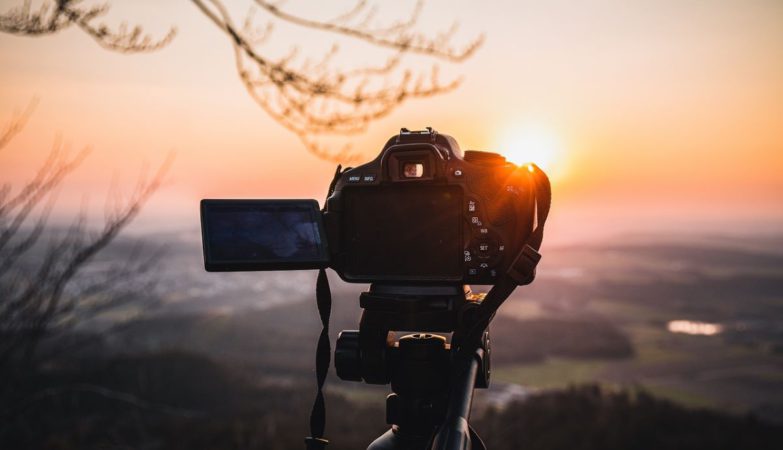In a world dominated by visual content, professional photographers play a pivotal role in capturing moments, telling stories, and evoking emotions through their lenses. The life of a professional photographer is a captivating blend of creativity, technical prowess, and relentless dedication. Here, we will delve into a typical day in the life of a professional photographer, shedding light on seven crucial aspects that define their profession.
The Early Rise and Preparation
 The day of a professional photographer often begins before the crack of dawn. Whether they specialise in landscape photography, portrait photography, or event photography, they must seize the perfect lighting conditions. Early mornings provide soft, diffused light and tranquil scenes that can elevate the quality of their work.
The day of a professional photographer often begins before the crack of dawn. Whether they specialise in landscape photography, portrait photography, or event photography, they must seize the perfect lighting conditions. Early mornings provide soft, diffused light and tranquil scenes that can elevate the quality of their work.
Upon waking, a photographer meticulously prepares their gear. This entails checking camera settings, cleaning lenses, charging batteries, and organising equipment. Even if they are using high-quality equipment like Leica cameras, they know that homework needs to be done. Using only a Leica digital camera might not be enough when it comes to big events like fashion shows. There’s a mix of technology required to make the photos look truly magical. Professionals understand the significance of being well-prepared; missing a shot due to technical issues is not an option.
The Art of Location Scouting
Location scouting is an indispensable part of a photographer’s routine. Before embarking on a shoot, they conduct thorough research to identify ideal settings. Professional photographers often revisit locations several times to understand how lighting conditions change throughout the day, allowing them to anticipate the best times for their shoots.
Whether it’s a secluded forest, an urban alleyway, or a picturesque beach, location scouting is about finding the canvas that will best convey the intended message or emotion of the photograph.
Navigating the Creative Process
Creativity flows through a photographer’s veins, and the process of capturing a compelling image is an intricate dance between technical skill and artistic vision. With each click of the shutter, they must consider composition, lighting, and perspective. The ability to see the extraordinary in the ordinary is what sets professional photographers apart.
They experiment with angles, focal lengths, and exposure settings to create images that tell stories or provoke deep emotions. It’s a process that requires patience, adaptability, and a keen eye for detail.
The People Behind the Portraits
For portrait photographers, a significant portion of their day is spent working with people. This involves establishing rapport, making subjects feel comfortable in front of the camera, and eliciting genuine expressions. Having a small talk about general topics like the benefits of sunscreens or giving them the advice to carry sunscreen with them for morning photoshoots can help break the ice.
Photographers must also consider the post-production work involved in retouching and enhancing portraits. This step requires a deep understanding of the software to ensure the final image aligns with their artistic vision.
Event Photography: Capturing Moments in Real-Time
Event photographers have a unique challenge: they must document fleeting moments as they unfold. Whether it’s a wedding, a sports event, or a corporate conference, they are the silent observers tasked with preserving memories.
A typical day for an event photographer involves constant movement, quick decision-making, and an acute sense of timing. They must be prepared for unexpected moments, adapt to changing lighting conditions, and ensure they capture all the key moments that define the event.
The Art of Post-Processing
Once the photographs are captured, the work is far from over. Professional photographers invest significant time in post-processing. This step involves sorting through hundreds or even thousands of images, selecting the best ones, and enhancing them using various editing techniques.
Post-processing is where photographers add their signature style, applying colour grading, sharpening, and retouching to create images that stand out. This meticulous process can take just as long as the actual shooting, and it’s where the artistry truly shines.
Balancing Business and Passion
Last but not least, the life of a professional photographer is not just about creating stunning images; it’s also about running a business. Photographers need to manage their bookings, market their services, handle client communication, and maintain their equipment.
The business side of photography can be as demanding as the creative aspect, but it’s essential for sustaining a career. Building a strong online presence through websites and social media platforms is crucial in today’s digital age.
All in all, a day in the life of a professional photographer is a multifaceted journey through the realms of creativity, technical expertise, and business acumen. From the early morning preparations to the final post-processing touches, each step is a labour of love and dedication to the craft. Through their lenses, professional photographers capture the beauty, emotion, and stories that make our world more vivid and memorable. Their work not only enriches our lives but also reminds us of the power of visual storytelling in our increasingly visual society.







